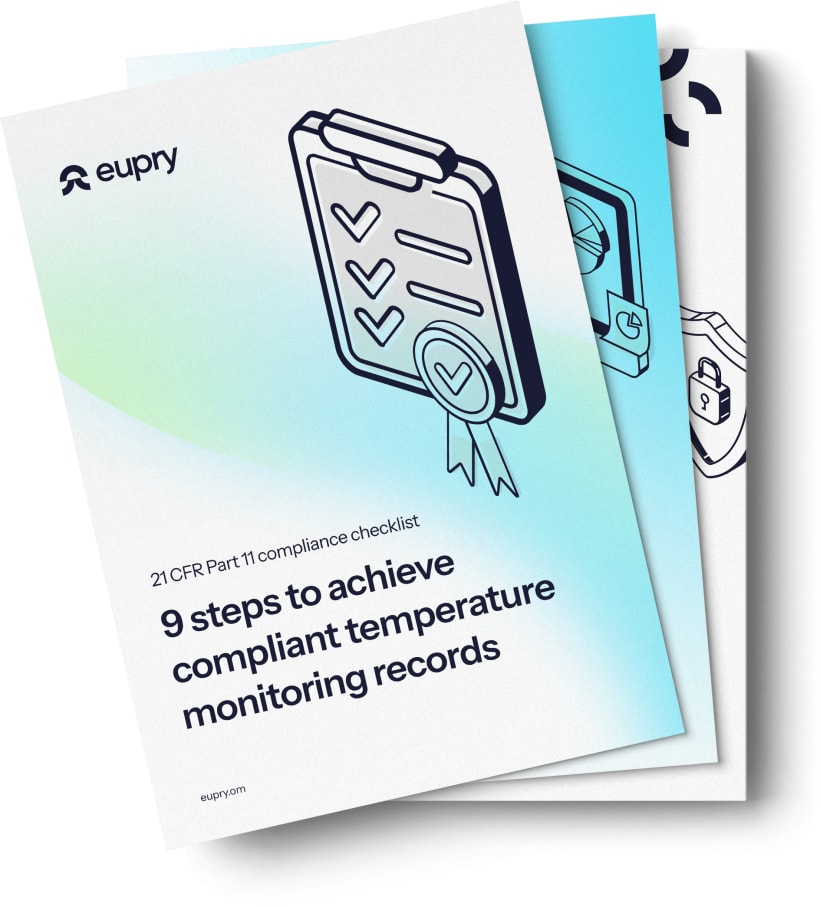
Increasing FDA inspections in pharma – how to prepare your compliance processes

Jakob Konradsen

In the FDA’s most recent "State of Pharmaceutical Quality" report, it was shown that the number of drug quality assurance inspections conducted by the FDA increased by more than 40% from 2022 to 2023 – also in European markets.
What does this mean for the operations of your pharma facilities?
And how do you prepare your temperature compliance processes for these increasing FDA inspections
In this article, we go through the adjustments you should consider to make sure you meet FDA standards.
Also see: Guidelines: Pharmaceutical refrigerator monitoring

9-step checklist: FDA 21 CFR Part 11-compliant temperature monitoring
Get a step-by-step checklist to make sure your temperature compliance and monitoring are FDA 21 CFR Part 11 compliant.
Also see: 5 ways DSCSA enforcement will impact your temperature compliance
9 adjustments to prepare your temperature compliance for more FDA inspections
- Prioritize: Prepare for heightened regulatory scrutiny. Many facilities will face more frequent inspections, which means constant readiness is necessary to comply with the standards. Your facilities must prioritize compliance with both storage and production protocols to avoid potential quality violations. This might also include allocating more resources, such as staffing and budget, dedicated to compliance activities to ensure continuous compliance with the requirements.
- Global focus: The FDA's expanded focus includes international sites, notably in the EU, where 42% of manufacturing sites are located. This highlights the importance of maintaining consistent temperature compliance practices across locations – also outside the US. it also means that overseeing your entire supply chain, from raw material procurement to finished product distribution, is more important than ever.
- Ensure documentation and data integrity: There will be a greater emphasis on the accuracy and completeness of documentation. Make sure all your data and processes are transparent and traceable.
- Implement preventive action plans: Your facilities should have or implement proactive measures to identify potential compliance issues before they are flagged during inspections.
- Invest in training and development: Through ongoing training programs, keep your staff updated on the latest FDA and EMA guidelines and best practices in temperature compliance.
- Follow quality assurance trends: The FDA's data shows a higher number of inspections result in No Action Indicated (NAI) or Voluntary Action Indicated (VAI) outcomes, indicating robust quality systems are in place. Facilities must ensure that their temperature control systems support such outcomes through reliable, continuous monitoring.
- Investment in technology: Manage compliance by adopting a robust quality management system that adapts to the varying requirements of both agencies. Adopting advanced technologies for validation, monitoring, and calibration can help maintain compliance and simplify the audit processes (oh, that’s what we do – would you look at that? Learn more about Eupry’s automated temperature compliance solution here).
- Risk management emphasis: With natural hazards identified as a significant risk to supply chain integrity, ensuring stable storage environments through advanced temperature monitoring can mitigate risk exposures.
- Be prepped for recalls: Given the increase in recalls due to contamination and other quality issues, robust temperature control can also be a critical factor in preventing product recalls. Formulating strategies to respond to findings from inspections will also be critical in maintaining operational continuity and license to operate.
Do (FDA-level) temperature compliance smarter
Increased scrutiny could lead to challenges but also opportunities for compliance-focused innovations. At Eupry, we understand the complexities of meeting these standards.
Our integrated temperature monitoring solutions facilitate compliance with both FDA and EMA regulations, effectively managing the risk of non-compliance – in (much!) less time.
Learn more about how the technology works in our catalog.


